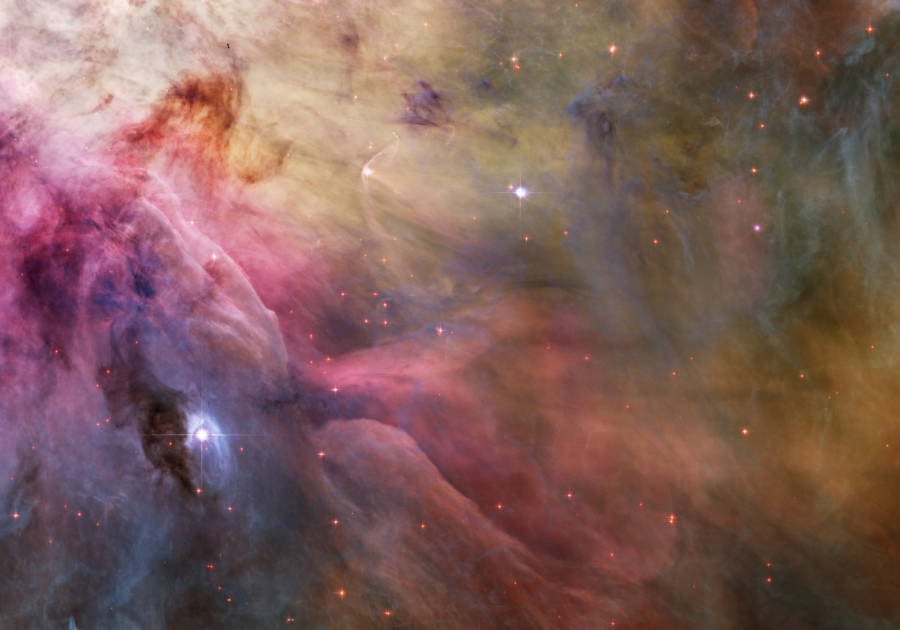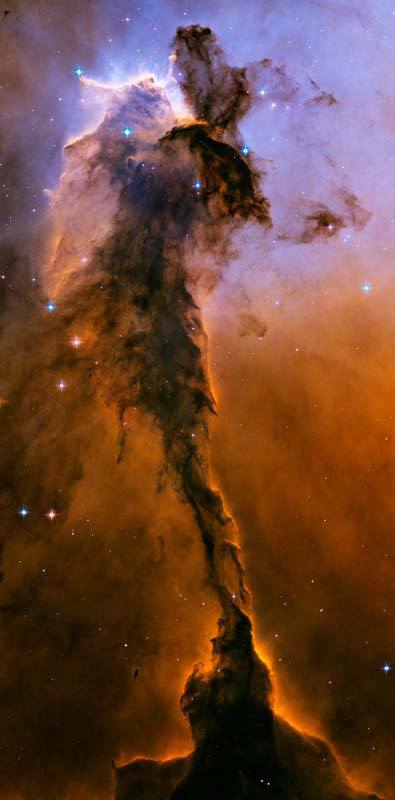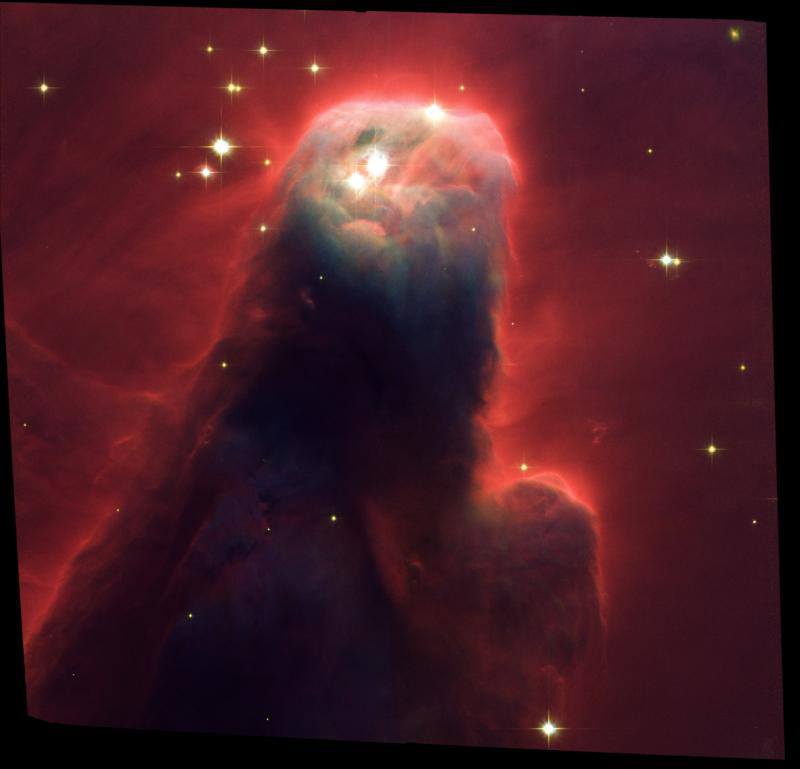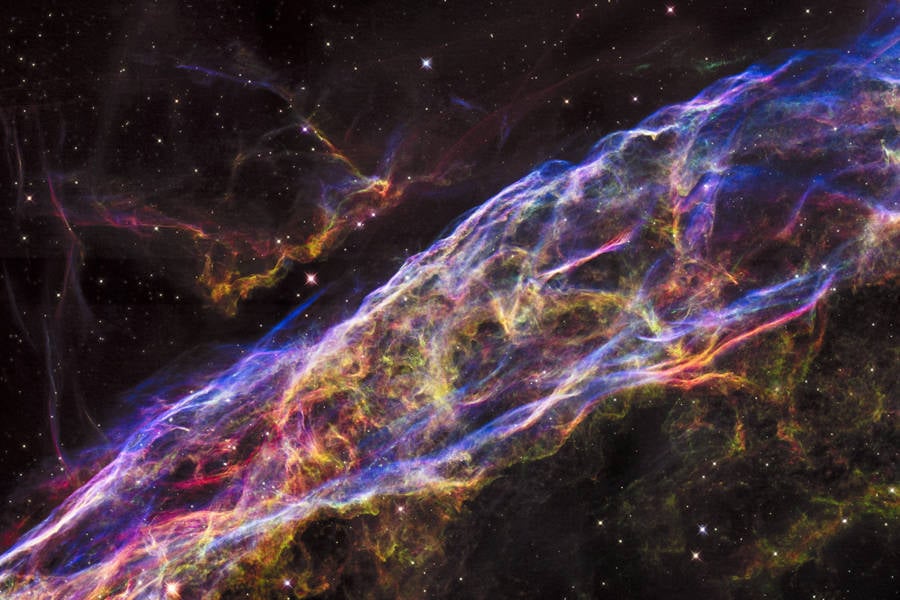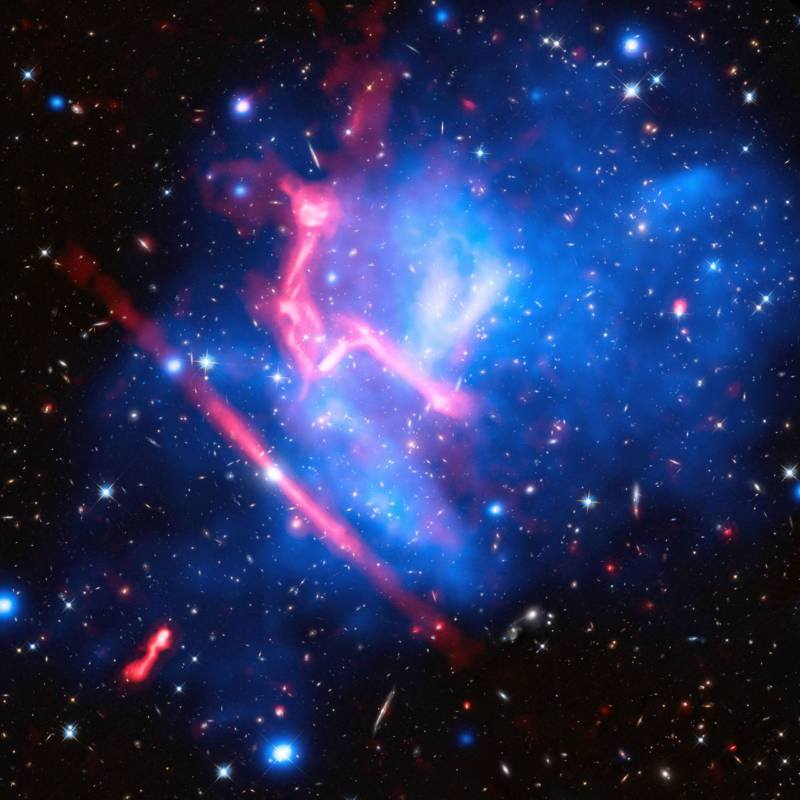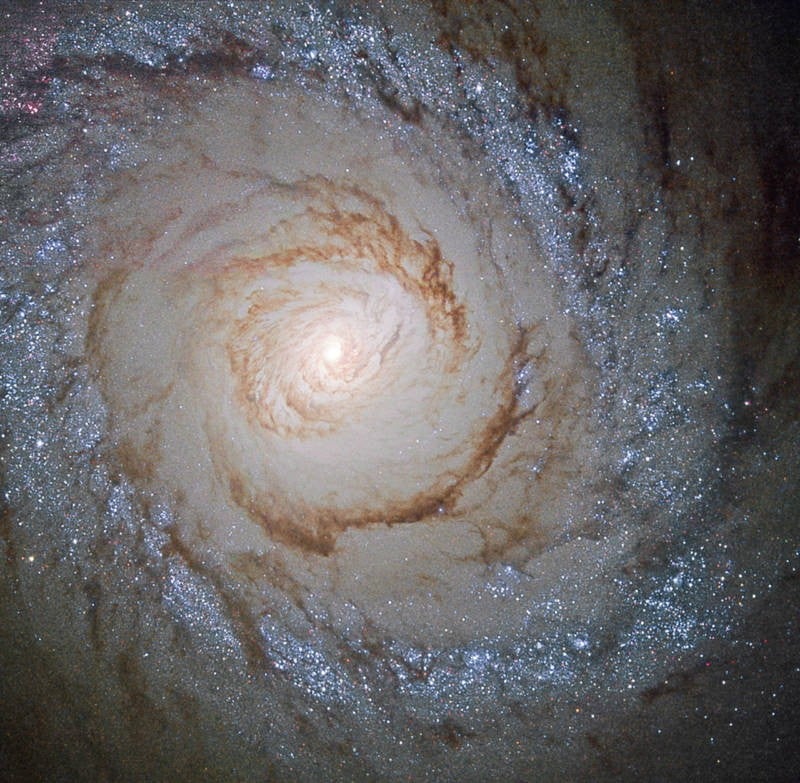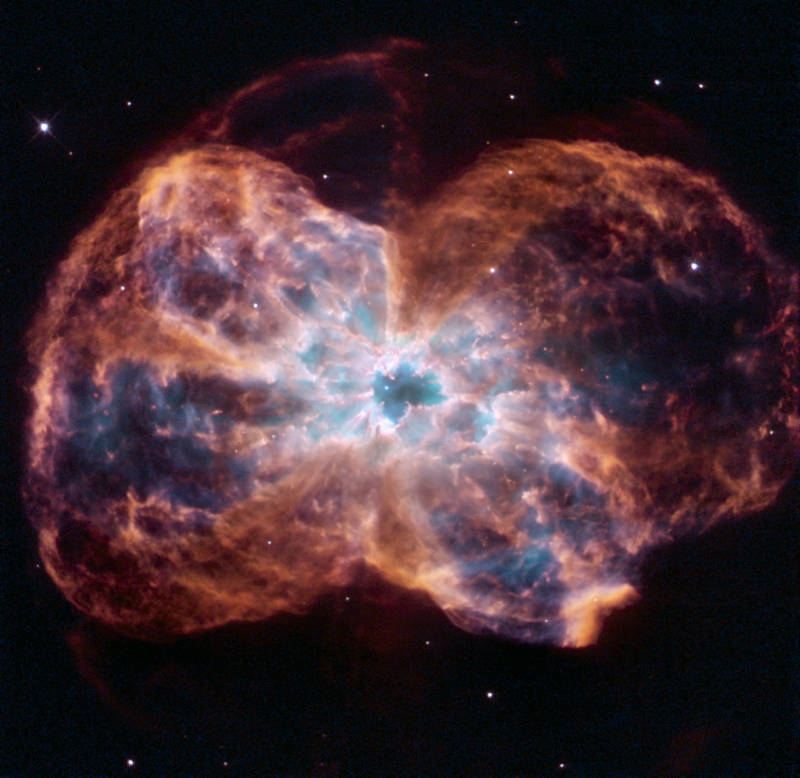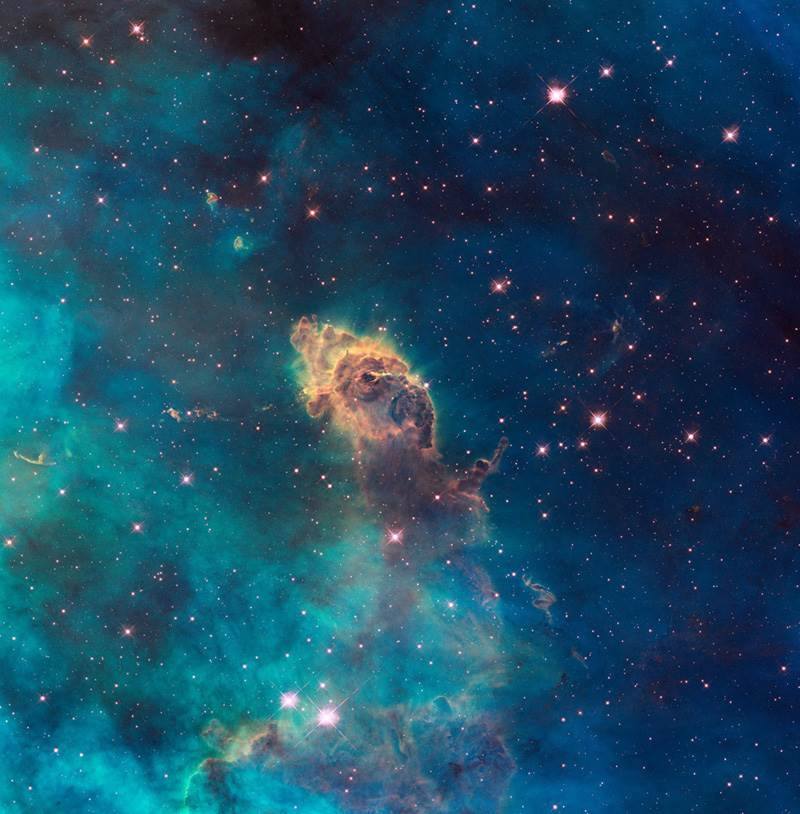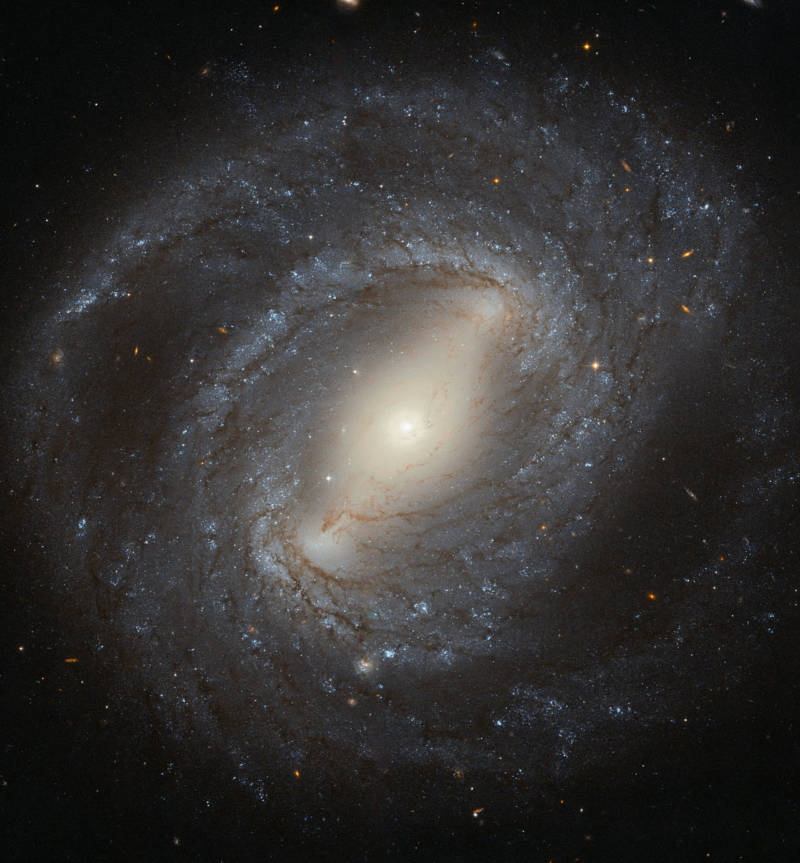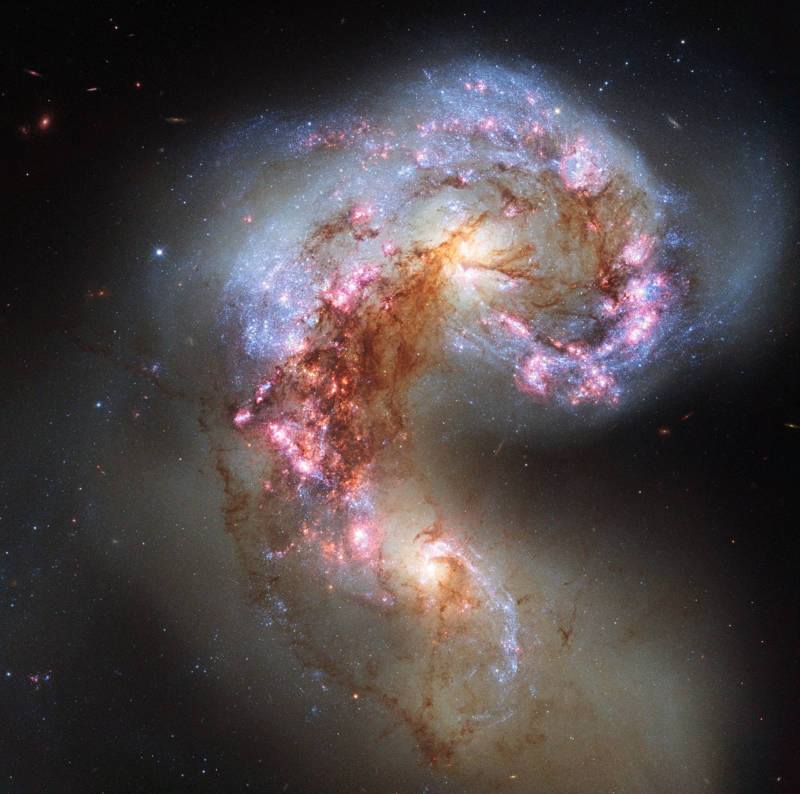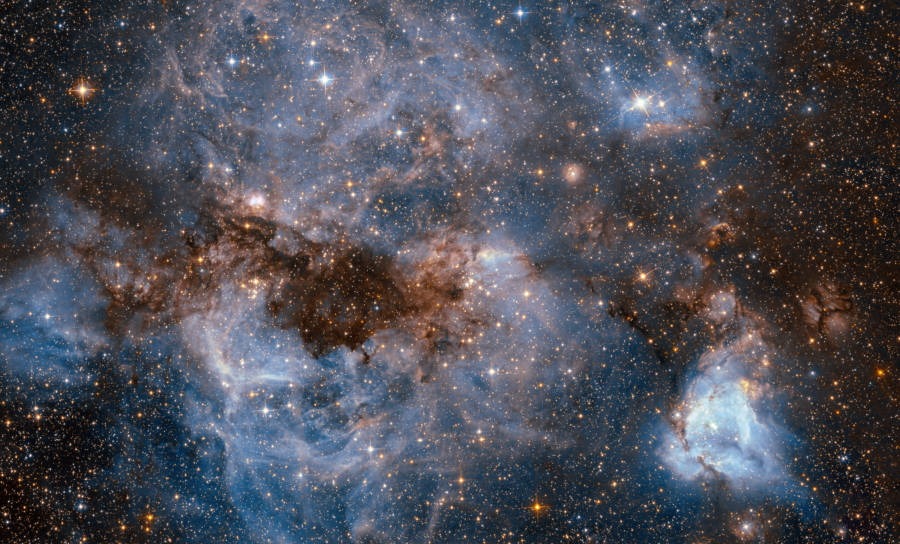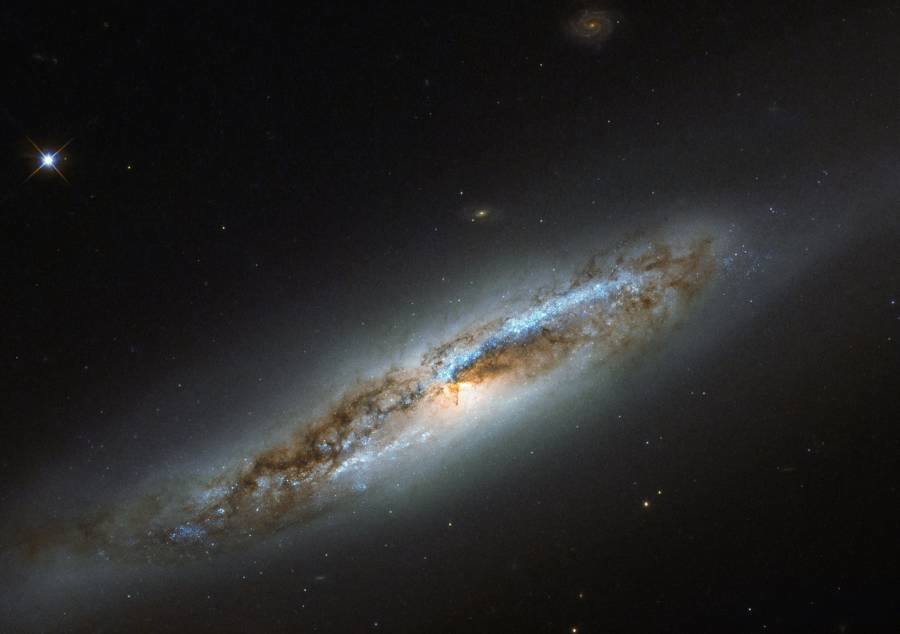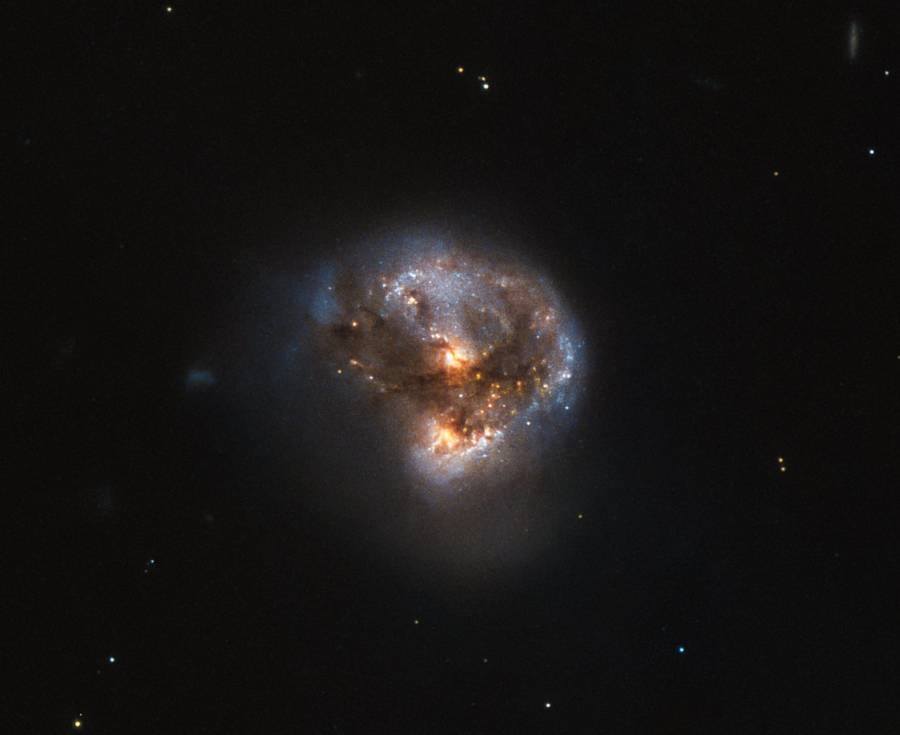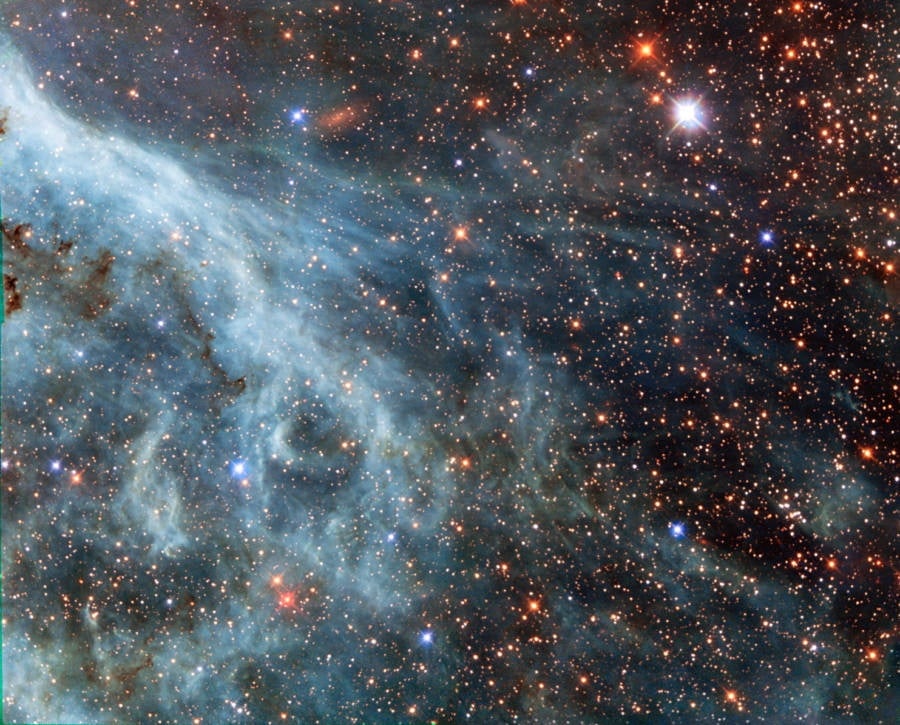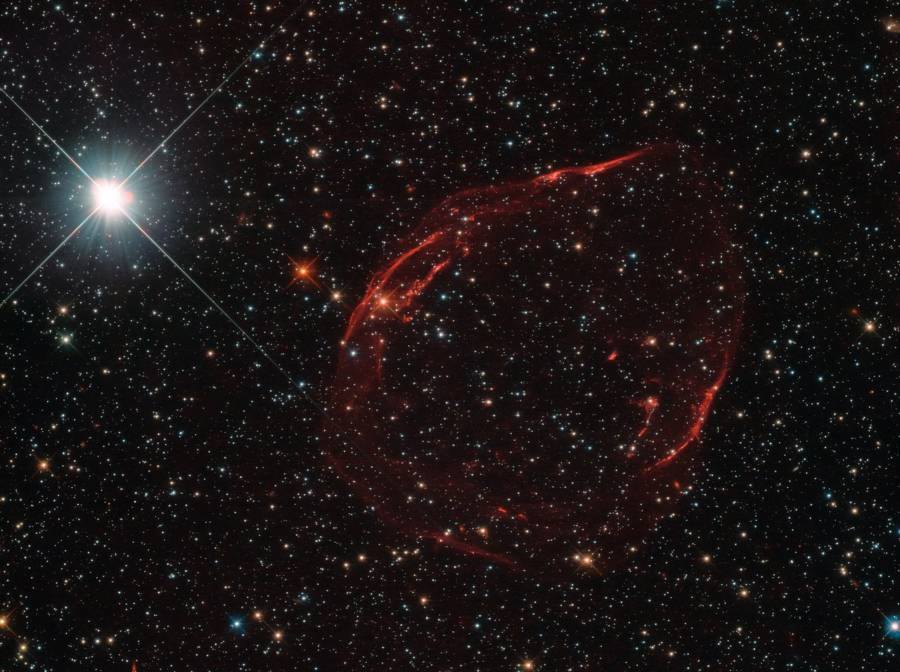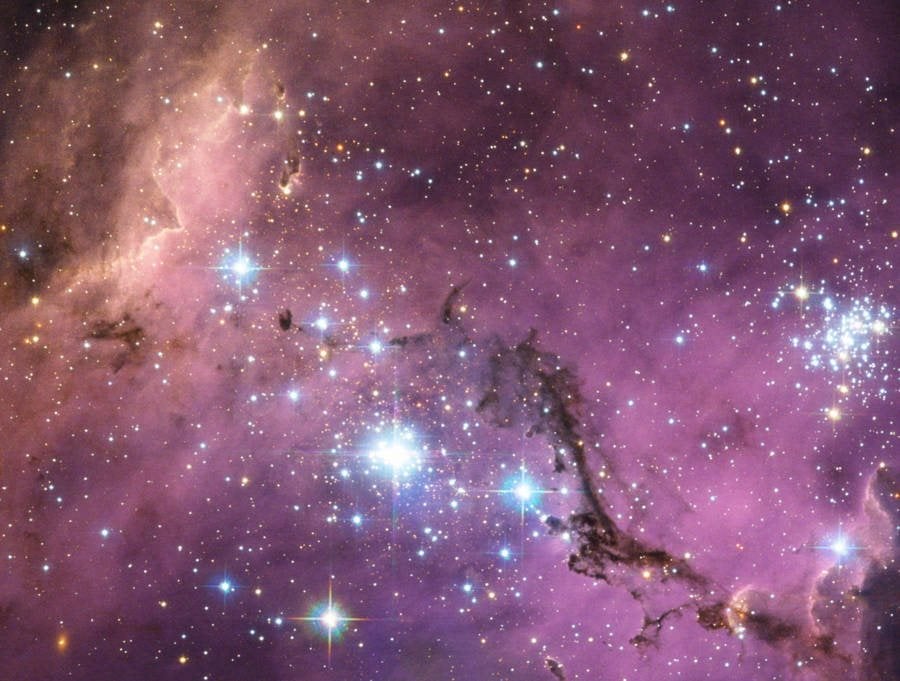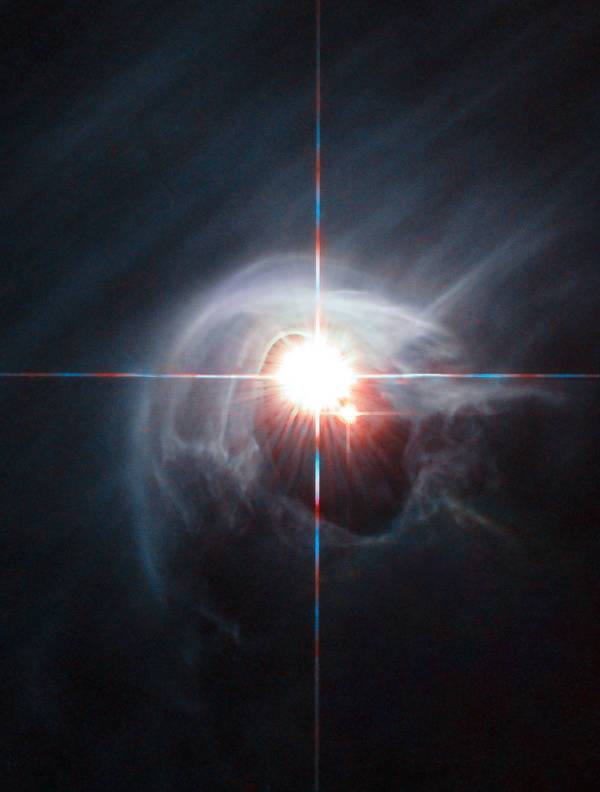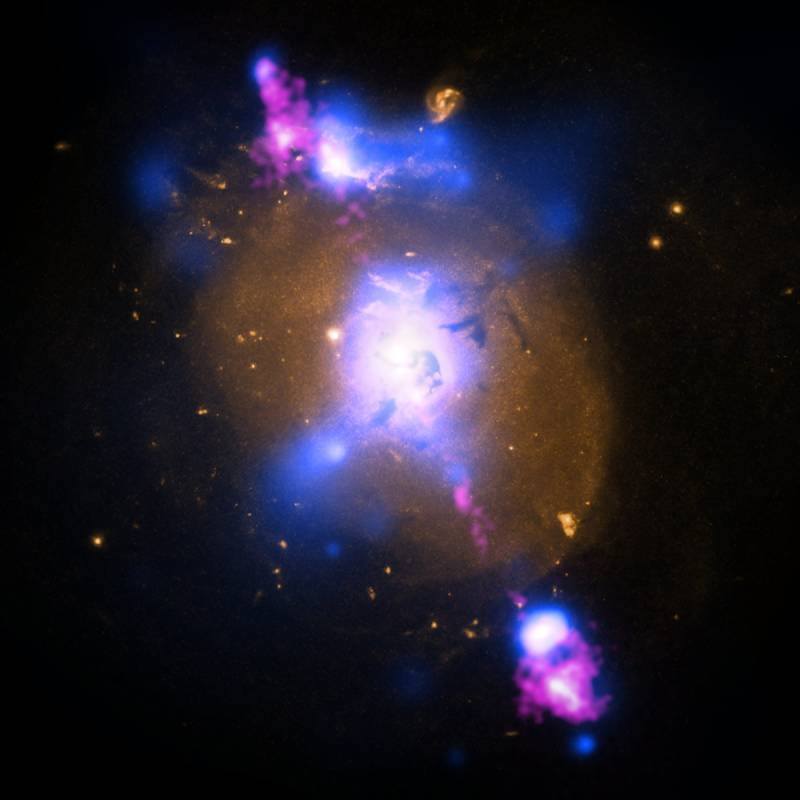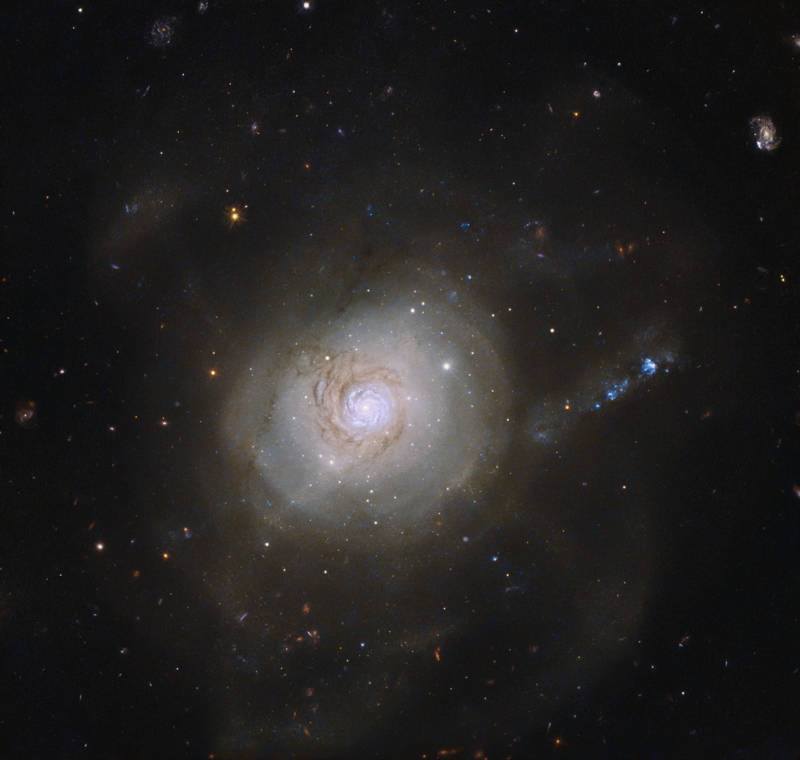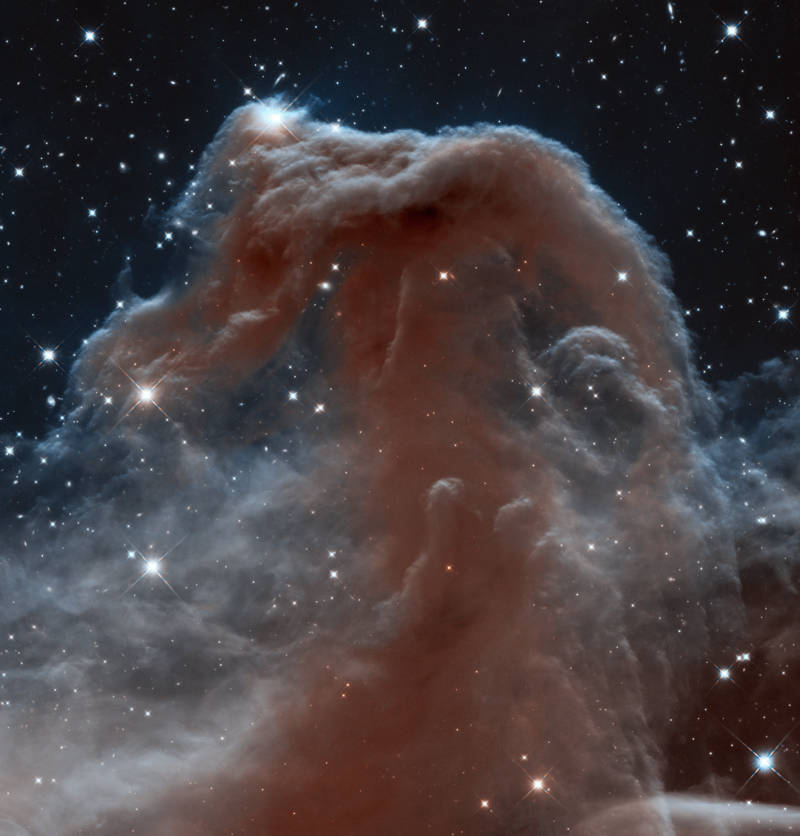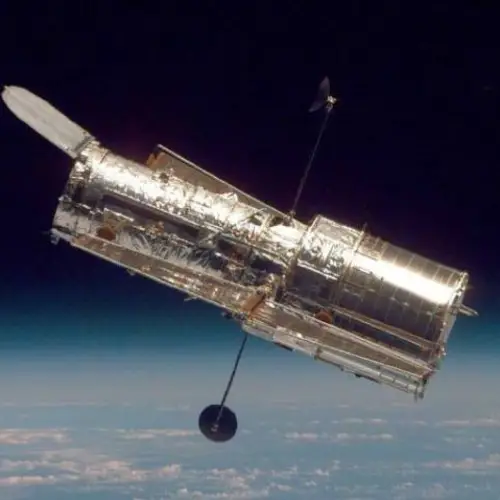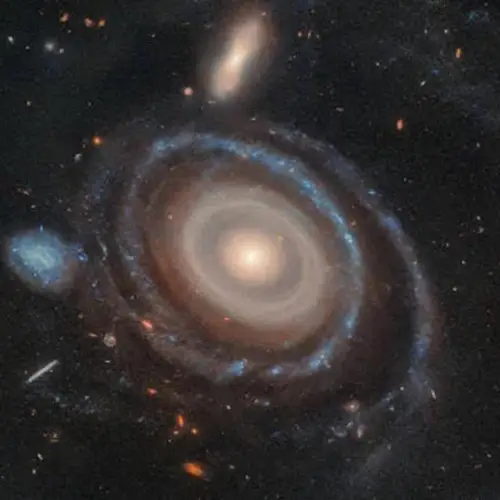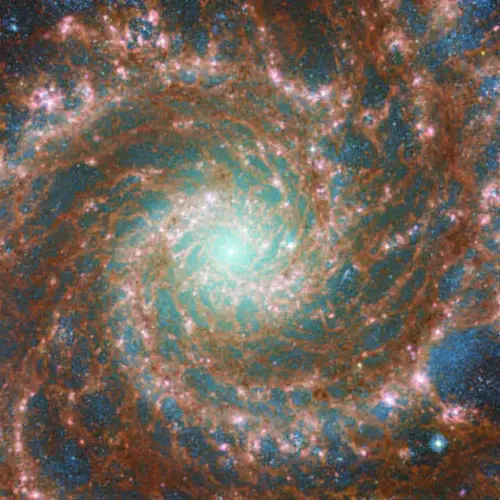1 of 34
This close-up of cosmic clouds and stellar winds features LL Orionis interacting with the Orion Nebula flow. Adrift in Orion's stellar nursery and still in its formative years, variable star LL Orionis produces a wind more energetic than the wind from our own middle-aged Sun.NASA
2 of 34
Discovered over the course of the years 1745 and 1746 by French astronomer Philippe de Cheseaux, the Eagle Nebula pictured here is part of the Pillars of Creation that was first photographed by the Hubble telescope in 1995. Some scientists have speculated that the nebula may, in fact, no longer have its distinctive shape thanks to a 2007 supernova explosion in its vicinity.NASA
3 of 34
Darker and a bit more foreboding than some other nebulae, the Cone Nebula is in fact part of larger cluster of nebulae (called the Christmas Tree Cluster) and a star-forming body like other nebulae in the night sky. The Cone Nebula lies within the Monoceros constellation and can be viewed in the night sky near the planet Betelgeuse.NASA
4 of 34
A small section of the Veil Nebula, expanding remains of a massive star that exploded about 8,000 years ago.NASA
5 of 34
This particular image stands apart from the rest in that it is not a nebula, but the result of a supernova explosion that would have occurred nearly 7,000 years ago. Despite the age of the explosion and the resulting gaseous debris that form this cloud, the explosion would have been visible as the brightest star in the night sky in the year 1006 A.D.NASA
6 of 34
The bright clusters and nebulae of planet Earth's night sky are often named for flowers or insects. Though the Butterfly Nebula's wingspan covers more than three light-years, NGC 6302 is no exception. With an estimated surface temperature of about 250,000 degrees C, the dying central star of this particular planetary nebula has become exceptionally hot.NASA
7 of 34
MACS J0717 is located about 5.4 billion light-years away from Earth, in the constellation of Auriga (The Charioteer). It is one of the most complex galaxy clusters known; rather than being a single cluster, it is actually the result of four galaxy clusters colliding. NASA
8 of 34
Huge waves are sculpted in this two-lobed nebula some 3,000 light-years away in the constellation of Sagittarius. NASA
9 of 34
This image shows the galaxy Messier 94, which lies in the small northern constellation of the Hunting Dogs, about 16 million light-years away. Within the bright ring around Messier 94, new stars are forming at a high rate and many young, bright stars are present within it – thanks to this, this feature is called a starburst ring. NASA
10 of 34
This colourful bubble is a planetary nebula called NGC 6818, also known as the Little Gem Nebula. It is located in the constellation of Sagittarius (The Archer), roughly 6,000 light-years away from us. The rich glow of the cloud is just over half a light-year across — humongous compared to its tiny central star — but still a little gem on a cosmic scale.NASA
11 of 34
This image of NGC 2440 shows the colourful "last hurrah" of a star like our Sun. The star is ending its life by casting off its outer layers of gas, which formed a cocoon around the star's remaining core. NASA
12 of 34
The Lagoon Nebula, an object with a deceptively tranquil name. The region is filled with intense winds from hot stars, churning funnels of gas, and energetic star formation, all embedded within an intricate haze of gas and pitch-dark dust.NASA
13 of 34
Found in the sky of Earth’s southern hemisphere, the Carina Nebula is another of the largest and most visible objects in the night sky. Located within the Carina constellation and in our own Milky Way galaxy, the nebula holds the distinction of being home to two of the most massive starts in our galaxy.NASA
14 of 34
Discovered in 1784 by the German–British astronomer William Herschel, NGC 4394 is a barred spiral galaxy situated about 55 million light-years from Earth. The galaxy lies in the constellation of Coma Berenices (Berenice's Hair), and is considered to be a member of the Virgo Cluster.NASA
15 of 34
The NASA/ESA Hubble Space Telescope has captured stunning images like this for decades now. Seen here are the Antennae Galaxies (known as NGC 4038 and NGC 4039) locked in a deadly embrace.NASA
16 of 34
Dubbed the Orion Nebula, this particular nebula is among the brightest in our night sky and one of the most widely studied nebula in the history of the science. Situated near Orion’s Belt constellation (where it is visible to the naked eye as the middle star in Orion’s sword), the Orion Nebula is home to thousands of stars, all in various stages of life.NASA
17 of 34
This shot shows a maelstrom of glowing gas and dark dust within one of the Milky Way’s satellite galaxies, the Large Magellanic Cloud (LMC). This stormy scene shows a stellar nursery known as N159, an HII region over 150 light-years across. N159 contains many hot young stars.NASA
18 of 34
The constellation of Virgo (The Virgin) is especially rich in galaxies, due in part to the presence of a massive and gravitationally-bound collection of more than 1,300 galaxies called the Virgo Cluster.NASA
19 of 34
This galaxy has a soft, woolly appearance as it a member of a class of galaxies known as flocculent spirals. Like other flocculent galaxies, NGC 3521 lacks the clearly defined, arcing structure to its spiral arms that shows up in galaxies such as Messier 101, which are called grand design spirals. In flocculent spirals, fluffy patches of stars and dust show up here and there throughout their discs.NASA
20 of 34
This galaxy has a far more exciting and futuristic classification than most — it is a megamaser. Megamasers are intensely bright, around 100 million times brighter than the masers found in galaxies like the Milky Way. NASA
21 of 34
The Calabash Nebula, pictured here is a spectacular example of the death of a low-mass star like the Sun. NASA
22 of 34
With its helical appearance resembling a snail’s shell, this reflection nebula seems to spiral out from a luminous central star. NASA
23 of 34
The brightly glowing plumes seen in this image are reminiscent of an underwater scene, with turquoise-tinted currents and nebulous strands reaching out into the surroundings. However, this is no ocean. This image actually shows part of the Large Magellanic Cloud (LMC), a small nearby galaxy that orbits our galaxy, the Milky Way, and appears as a blurred blob in our skies.NASA
24 of 34
The spiral galaxy NGC 4845, located more than 65 million light-years away in the constellation of Virgo (The Virgin). The galaxy’s orientation clearly reveals the galaxy’s striking spiral structure: a flat and dust-mottled disc surrounding a bright galactic bulge.NASA
25 of 34
Several thousand years ago, a star some 160,000 light-years away from us exploded, scattering stellar shrapnel across the sky. The aftermath of this energetic detonation is shown here.NASA
26 of 34
The elegant simplicity of NGC 4111 hides a more violent history than you might think. NGC 4111 is a lenticular, or lens-shaped, galaxy, lying about 50 million light-years from us in the constellation of Canes Venatici (The Hunting Dogs). Lenticular galaxies are an intermediate type of galaxy between an elliptical and a spiral. NASA
27 of 34
Nearly 200,000 light-years from Earth, the Large Magellanic Cloud, a satellite galaxy of the Milky Way, floats in space, in a long and slow dance around our galaxy. As the Milky Way’s gravity gently tugs on its neighbor’s gas clouds, they collapse to form new stars. In turn, these light up the gas clouds in a kaleidoscope of colors.NASA
28 of 34
NGC 4639 is a beautiful example of a type of galaxy known as a barred spiral. It lies more than 70 million light-years away in the constellation of Virgo and is one of about 1,500 galaxies that make up the Virgo Cluster.NASA
29 of 34
Two stars shine through the centre of a ring of cascading dust. The star system is named DI Cha, and while only two stars are apparent, it is actually a quadruple system containing two sets of binary stars. NASA
30 of 34
This galaxy lies some 300 million light-years away from us, and is currently experiencing an extraordinarily high rate of star formation — a starburst.NASA
31 of 34
This composite image of a galaxy illustrates how the intense gravity of a supermassive black hole can be tapped to generate immense power. The image contains X-ray data from NASA's Chandra X-ray Observatory (blue), optical light obtained with the Hubble Space Telescope (gold) and radio waves from the NSF's Very Large Array (pink).NASA
32 of 34
Dubbed the Atoms for Peace galaxy, this nickname is quite ironic, as the galaxy’s past was anything but peaceful. Its peculiar appearance is the result of a collision between two galaxies that took place about a billion years ago, which ripped both galaxies apart.NASA
33 of 34
The iconic Horsehead Nebula.NASA
34 of 34
Like this gallery?
Share it:
